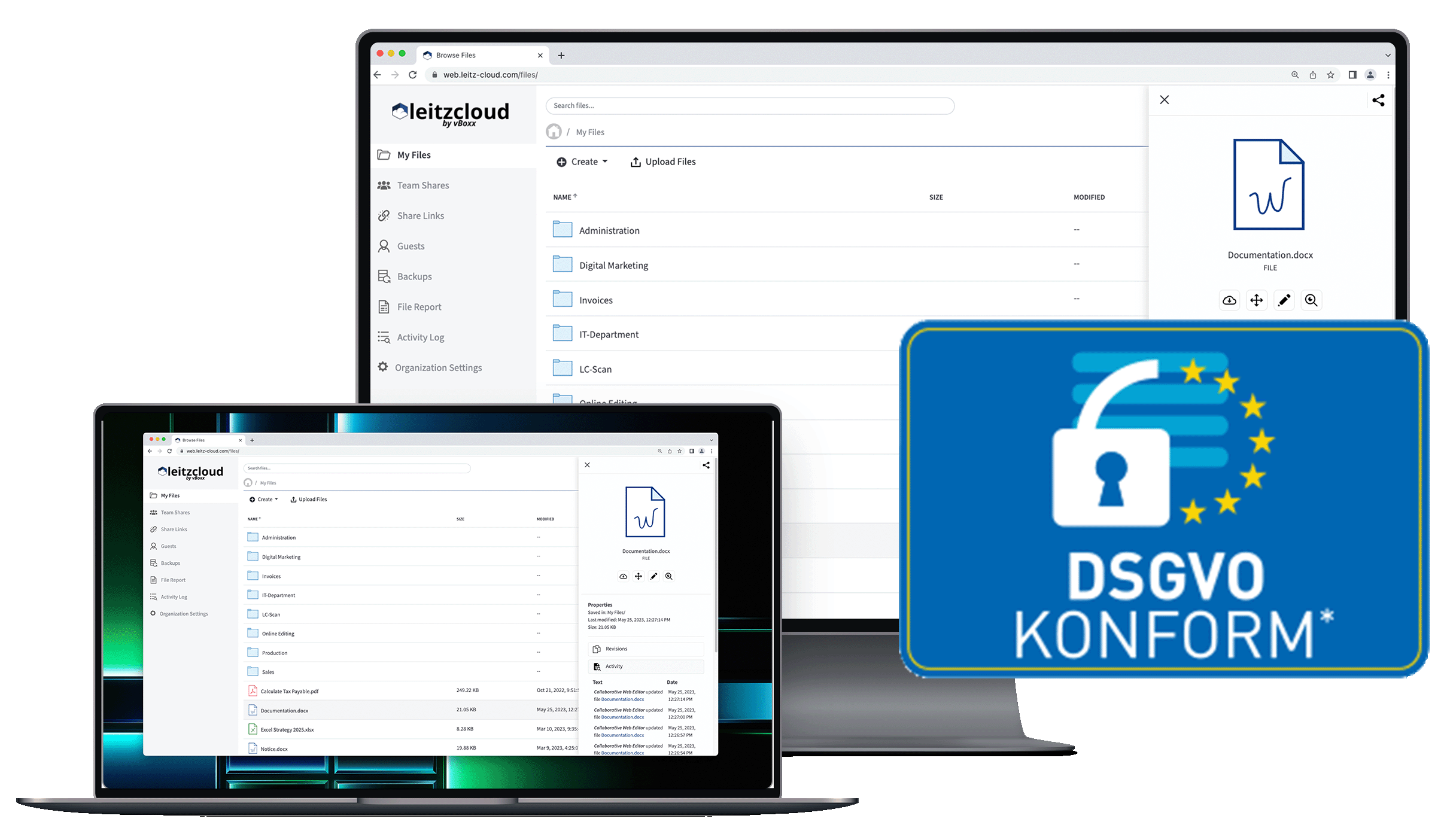Security Upgrade:
NIS 2 Explained Clearly and Concisely
Reading Time: 2 min
April 8, 2024

Due to increasing digitization, critical infrastructures are increasingly exposed to the growing risk of cyberattacks. In order to effectively counter this threat, the European Union (EU) has introduced the Network and Information Security 2 (NIS 2). But how exactly will NIS 2 help, and which of these guidelines must your company follow?
In response to increasingly complex digital threats to critical infrastructures within the European Union, the first NIS directive already laid a foundation. However, its scope was limited, and it failed to ensure a consistent level of security across the EU. With NIS 2, this goal is further pursued by providing enhanced protection against digital attacks while ensuring that companies in critical sectors respond appropriately to potential security risks.
Although NIS 2 does not apply to as many companies as the EU General Data Protection Regulation (GDPR), it will undoubtedly become an IT standard for critical infrastructures in the EU. Estimates suggest that over 100,000 companies will need to be NIS 2 compliant.
NIS2 Compliance Requirements
Companies must comply with NIS 2 if they provide services in an EU country, have a certain size, and operate in one of the 18 defined sectors. These sectors encompass critical areas such as energy, transportation, banking, healthcare, and many others.
The directive comes into force on October 18, 2024, giving companies a limited timeframe to adjust their security measures accordingly.
Compliance with NIS 2 thus necessitates a comprehensive review and adaptation of security measures to meet the directive's requirements and avoid potential fines. This means that companies must assess their networks and information systems for potential vulnerabilities, develop security policies, report security incidents, and, if necessary, enhance their cyber resilience.
With a clear understanding of NIS 2, companies can take proactive steps to strengthen their cybersecurity and safeguard the integrity of their systems. The official and complete Official Journal of the European Union for NIS-2 can be found here Directive (EU) 2022/2555. .
Cybersecurity for Critical Infrastructures
Critical entities are businesses that act as key players in vital sectors and therefore bear increased responsibility for security. They encompass not only organizations in critical industries such as energy, transportation, finance, and healthcare, but also providers of trust services and DNS services. These companies play a crucial role in the functionality and security of EU infrastructure.
An attack on them could have far-reaching implications for the economy, public safety, and citizens' daily lives. Therefore, it is crucial that they implement adequate cybersecurity measures to fend off potential threats and ensure the continuity of their services.
The NIS 2 requires these critical entities to strengthen their security measures and actively strive to protect their networks and information systems from cyber threats.
This includes implementing risk management procedures, ensuring a robust security architecture, regularly reviewing and updating security policies, and training employees to raise awareness of security issues.
By complying with these requirements, critical entities can not only ensure compliance with the NIS 2 directive but also enhance their resilience to cyber attacks and strengthen the trust of their customers and partners.

The Difference Between NIS 2 and the EU GDPR
While both directives focus on data protection, there are crucial differences between NIS 2 and the EU General Data Protection Regulation (GDPR). While NIS 2 concentrates on the cybersecurity of businesses, the GDPR aims to protect personal data. Therefore, implementing and complying with the two directives require different measures and strategies.
The NIS 2 directive focuses on the security of networks and information systems to ensure the integrity and availability of critical infrastructures. This means that companies falling under NIS 2 must take specific technical and organizational measures to protect their IT systems from cyber attacks. This includes the implementation of security policies, regular vulnerability assessments, conducting risk assessments, and implementing incident response plans.

More Information about General Data Protection Regulation.
Although the two directives differ in their scope and requirements, it is important to note that companies falling under both NIS 2 and the GDPR must comply with both directives. This requires careful planning and coordination of security and data protection measures to meet the requirements of both directives while minimizing risks for the company.
NIS 2 Fines and Liability
Companies failing to comply with the requirements of NIS 2 can expect serious consequences. The directive sets fines that can be imposed depending on the severity of the violation.
In particular, for critical and essential entities, these fines can be substantial. The executive leadership bears the responsibility of ensuring that adequate risk management measures in cybersecurity are implemented and that the directive is properly enforced. If a breach of NIS 2 is identified, the top management can be held liable.
To promote compliance with the directive and strengthen cybersecurity across the EU, the introduction of certification requirements according to NIS 2 is crucial. Although NIS 2 itself does not prescribe mandatory certification, member states or the EU Commission may require critical and essential entities to use specific IT products or services certified under European cybersecurity certification schemes.
These certifications ensure that companies meet the necessary standards for cybersecurity and help build trust among customers, partners, and regulatory authorities in security measures.
By consistently implementing certification requirements, companies can not only ensure compliance with the NIS 2 directive but also enhance their resilience to cyber threats and reduce the risk of security incidents.
In light of the stringent requirements of NIS 2 and the necessity to bolster cybersecurity, it is crucial for companies to resort to proven solutions that assist them in tackling these challenges.
